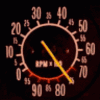Are you 12?
We are talking about maximum effort engines, not something that starts and runs.
Why do you think v8 supercars run a x ram manifold? The throttlebody, manifold, and inlet port are all more or less straight. the only corner is the short turn to the chamber.
THe factory Holden 3.3 injection manifold was designed to work on the standard engine, and works really well between 1000 and 4000rpm or there abouts. Anything over that its a complete flop. Its designed with long narrow runners to increase the torque spread of the engine, and it loops around because its the most convenient way to package it, as with most other injected six applications.
Im not talking about the angle of the float bowl, i have no idea where you got that from. The reason an injection manifold is less sensitive is because its flowing only air, so you have no worries about fuel dropout.
Though considering most maximum effort efi setups inject the fuel infront of the bellmouth (again, v8 supercars are a good example) the same principles of a carby manifold apply in this case.
Newtons first law of motion: "An object at rest stays at rest and an object in motion stays in motion with the same speed and in the same direction unless acted upon by an unbalanced force"
This applies equally as well to air molecules as it does to bricks.
Also the basic laws of fluidynamics dictate that a fluid does not like changing directions.
Seriously mate, wake up ey?














